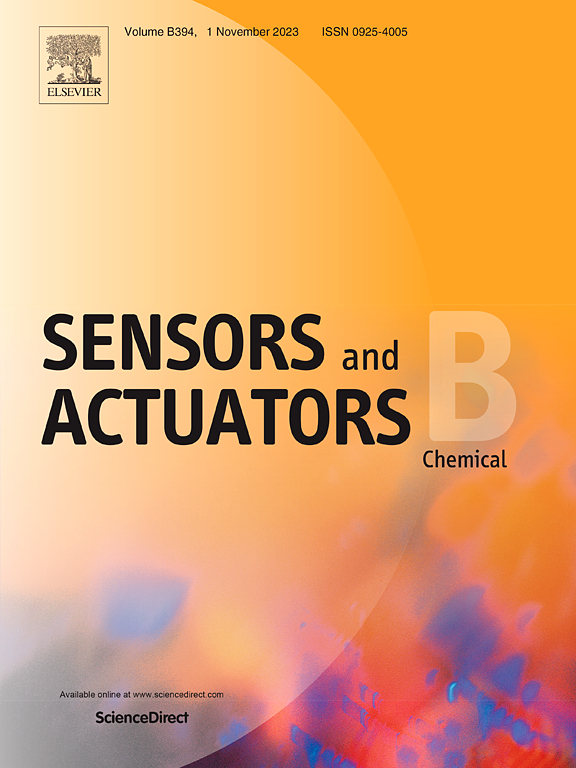等离子体介导效应增强纳米流体离子电流
IF 8
1区 化学
Q1 CHEMISTRY, ANALYTICAL
引用次数: 0
摘要
局部表面等离子体共振(LSPR)已广泛应用于各种应用中,但对其在等离子体介导的离子电流光化学和光热效应中的作用的理解仍处于起步阶段。为了提高光流体系统的效率,有必要研究电解液中LSPR对离子输运行为的影响。在这项研究中,我们采用三维纳米通道网络膜(NCNM)集成微/纳米流体装置来阐明等离子体介导的离子电流增强的机制。通过分析激光照射与热加热产生的离子电流,我们的研究结果表明,光电化学效应增加了空间电荷密度,对离子电流的增强作用比单纯的热效应更显著。此外,我们对各种结构参数的研究表明,通过3D NCNM优化激光功率吸收对于有效产生离子电流至关重要。这项研究代表了理解等离子体介导的离子传输机制的基本步骤,并为有效的光到离子传输转换提供了见解。这些发现具有广泛的应用潜力,包括光诱导能量收集装置,离子泵和波长选择纳米通道,如流体视紫红质系统。本文章由计算机程序翻译,如有差异,请以英文原文为准。
Enhancement of nanofluidic ionic current via plasmon-mediated effect
Localized surface plasmon resonance (LSPR) has been extensively used in various applications, but the comprehension of its role in plasmon-mediated photochemical and photothermal effects on ionic currents is still in its infancy. To improve the efficiency of optofluidic systems, it is imperative to investigate the ion transport behavior influenced by LSPR within electrolytes. In this study, we employ a 3D nanochannel network membrane (NCNM) integrated micro/nanofluidic device to elucidate the mechanisms underlying plasmon-mediated ionic current enhancement. By analyzing ionic currents generated by laser irradiation versus thermal heating, our results indicate that the photoelectrochemical effect, which increases the space charge density, plays a more significant role in ionic current enhancement than pure thermal effects. Furthermore, our investigation of various structural parameters shows that optimizing laser power absorption through the 3D NCNM is crucial for effective ionic current generation. This research represents a fundamental step in the understanding of plasmon-mediated ionic transport mechanisms and provides insights into efficient light-to-ionic transport conversion. These findings have potential for a wide range of applications, including photoinduced energy harvesting devices, ionic pumps and wavelength-selective nanochannels, such as fluidic rhodopsin systems.
求助全文
通过发布文献求助,成功后即可免费获取论文全文。
去求助
来源期刊

Sensors and Actuators B: Chemical
工程技术-电化学
CiteScore
14.60
自引率
11.90%
发文量
1776
审稿时长
3.2 months
期刊介绍:
Sensors & Actuators, B: Chemical is an international journal focused on the research and development of chemical transducers. It covers chemical sensors and biosensors, chemical actuators, and analytical microsystems. The journal is interdisciplinary, aiming to publish original works showcasing substantial advancements beyond the current state of the art in these fields, with practical applicability to solving meaningful analytical problems. Review articles are accepted by invitation from an Editor of the journal.
 求助内容:
求助内容: 应助结果提醒方式:
应助结果提醒方式:


